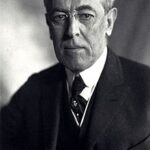President Woodrow Wilson signed the Federal Reserve Act on December 23, 1913. This landmark legislation created America’s central banking system after decades of financial instability. The decision addressed recurring banking panics that had plagued the nation since the 1800s.
The Federal Reserve System’s Revolutionary Design
Wilson’s Federal Reserve System established twelve regional banks across the United States. This decentralized structure balanced federal oversight with regional autonomy. The system provided elastic currency that could expand during economic growth periods. 📊 The Federal Reserve Board gained authority to regulate interest rates and money supply.
Addressing Financial Panics and Banking Crises
Previous banking panics had devastated American commerce and industry regularly. The Panic of 1907 particularly highlighted the need for central banking reform. ⚠️ Without a central bank, America lacked tools to respond to financial emergencies. Wilson’s system provided the lender-of-last-resort function that prevented future banking collapses.
Building Economic Infrastructure
The Federal Reserve System created standardized banking practices nationwide. 💰 Regional Federal Reserve banks coordinated monetary policy across state lines. This infrastructure supported America’s emergence as a global economic power.
Impact:
The Federal Reserve System transformed American economic policy and international finance permanently. Wilson’s decision created institutional stability that enabled unprecedented economic growth. The system successfully prevented banking panics for decades after its establishment.
Immediate Economic Stabilization Effects
Banks gained access to emergency funding through Federal Reserve discount windows. 📈 Interest rates became more stable and predictable for businesses and consumers. The elastic currency system accommodated seasonal agricultural and commercial demands effectively. Regional Federal Reserve banks provided localized economic oversight while maintaining national coordination.
Long-term Global Financial Leadership
America’s Federal Reserve System became the model for central banking worldwide. 🌍 The dollar’s stability increased international confidence in American financial markets. During World War I, the Federal Reserve helped finance Allied war efforts. This enhanced America’s position as a global financial center competing with London.
Modern Economic Management Legacy
The Federal Reserve System continues managing monetary policy over a century later. 💰 Modern tools like quantitative easing evolved from Wilson’s original framework. The system weathered the Great Depression, multiple recessions, and financial crises successfully. Today’s Federal Reserve maintains dual mandates of price stability and full employment. Wilson’s 1913 decision created the foundation for America’s current economic management system.
